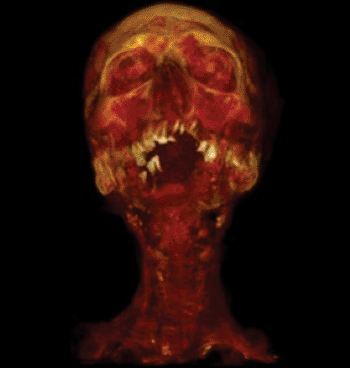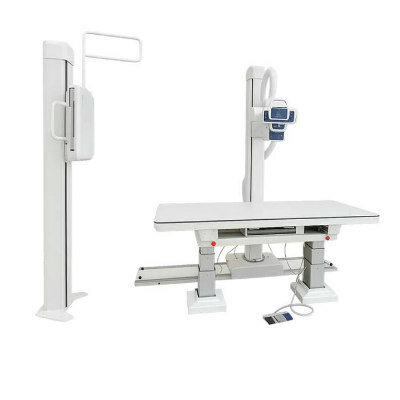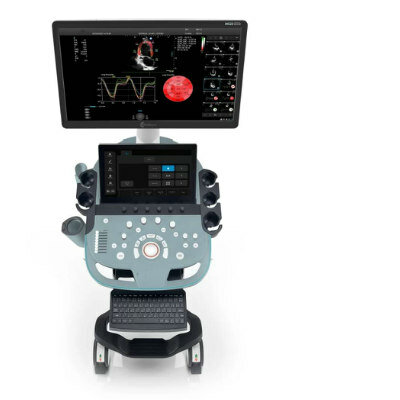CT Scans of Mummies Reveal Ancients Had Clogged Arteries
By MedImaging International staff writers
Posted on 27 Mar 2013
Computed tomography (CT) imaging of ancient hunter-gatherer mummies revealed that they suffered from clogged arteries similar to modern day humans, revealing that the plaque accumulation causing heart attacks, blood clots, and strokes is not just a consequence of fatty diets or couch potato habits, according to new research.Posted on 27 Mar 2013
The study’s findings were published March 10, 2013, in the journal the Lancet. The researchers performed CT) scans of 137 mummies from across four continents and found artery plaque in every single population studied, from preagricultural hunter-gatherers in the Aleutian Islands to the ancient Puebloans of southwestern United States.

Image: Coronal 3D volume-rendered CT reconstruction showing carotid artery disease. Bilateral carotid, bilateral subclavian, and brachiocephalic calcification of Hatiay (mummy 23), a male Egyptian scribe aged 40–50 years, who lived during the New Kingdom (1570–1293 BCE) and was found near modern day Luxor (Photo courtesy of Thompson et al, published Online First in the Lancet, March 10, 2013).
Their findings provide an important kink to the determination of atherosclerotic vascular disease, which is the leading cause of death in the developed world: whereas modern lifestyles can accelerate the development of plaque on our arteries, the pervasiveness of the disease across human history reveals it may have a more fundamental association to inflammation and aging.
“This is not a disease only of modern circumstance but a basic feature of human aging in all populations,” said Dr. Caleb Finch, a professor of gerontology at the University of Southern California (USC) Davis (USA) School of Gerontology, and a senior author of the study. “Turns out even a Bronze Age guy from 5,000 years ago had calcified, carotid arteries,” he said, referring to Otzi the Iceman, a natural mummy who lived approximately in 3,200 BCE and was discovered frozen in a glacier in the Italian Alps in 1991.
Working with Dr. Gregory Thomas from Long Beach Memorial (Long Beach, CA, USA), Dr. Finch was part of a group that earlier demonstrated that Egyptian mummies had calcified spots on their arteries indicative of advanced atherosclerosis. However, ancient Egyptians tended to mummify only royalty or those who had privileged lives. The new study, led by Dr. Thomas and Randall Thompson , from Saint Luke’s Mid America Heart Institute (Kansas City, MO, USA), evaluated mummies from four extremely different diets and climates--and from cultures that mummified common humans, including ancient Peruvians, Unangans of the Aleutian Islands, ancestral Puebloans, and ancient Egyptians.
“Our research shows that we are all at risk for atherosclerosis, the disease that causes heart attacks and strokes—all races, diets, and lifestyles,” said Dr. Thomas, medical director of the MemorialCare Heart & Vascular Institute, Long Beach Memorial. “Because of this we all need to be cautious of our diet, weight, and exercise to minimize its impact. The data gathered about individuals from the prehistoric cultures of ancient Peru and the Native Americans living along the Colorado River and the Unangan of the Aleutian Islands is forcing us to think outside the box and look for other factors that may cause heart disease.”
Overall, the researchers found probable or definite atherosclerosis in 34 percent of the mummies studied, with calcification of arteries more pronounced in the mummies that were older at time of death. Artherosclerosis was equally typical in mummies identified as male or female. “We found that heart disease is a serial killer that has been stalking mankind for thousands of years,” Thompson said. “In the last century, atherosclerotic vascular disease has replaced infectious disease as the leading cause of death across the developed world. A typical hypothesis is that the increase in levels of atherosclerosis is predominantly lifestyle-related, and that if modern humans could emulate preindustrial or even preagricultural lifestyles, that atherosclerosis, or at least its clinical manifestations, would be avoided. Our findings seem to cast doubt on that assumption, and at the very least, we think they suggest that our understanding of the causes of atherosclerosis is incomplete, and that it might be somehow inherent to the process of human aging.”
The international group of researchers will next look to biopsy ancient mummies to get a better determination of the role inflammation, chronic infection, and genetics in encouraging the prevalence of atherosclerosis. “Atherosclerosis starts very early in life. In the United States, most kids have little bumps on their arteries. Even stillbirths have little tiny nests of inflammatory cells. But environmental factors can accelerate this process,” Prof. Finch said, noting studies that show larger plaques in children exposed to household tobacco smoking or who are obese.
Related Links:
University of Southern California, Davis
Long Beach Memorial
Saint Luke’s Mid America Heart Institute














